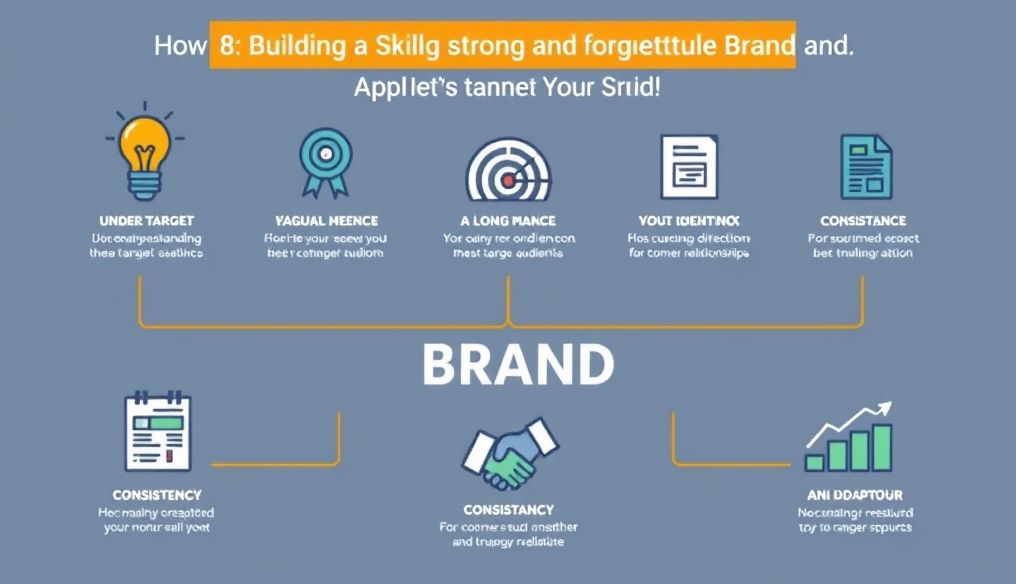Introduction: Social Media - Your Project's Window to the World
In our digital age, social media has become an integral part of our daily lives. For small businesses, these platforms represent a golden opportunity to reach a wide audience, build a strong brand, and increase sales at a reasonable cost. However, success in this area requires a well-thought-out strategy and continuous effort.
Chapter 1: Identifying Your Target Audience - The First Step to Success
Before starting any marketing campaign, it is essential to accurately identify your target audience. Who are your ideal customers? What are their interests? Which platforms do they use? The better you understand your audience, the more engaging and effective content you can create.
- Demographic Data Analysis: Age, gender, geographic location, education, income.
- Behavioral Analysis: Interests, hobbies, activities, values.
- Surveys: Collecting opinions from current and potential customers.
- Competitor Analysis: Studying competitors' strategies and identifying strengths and weaknesses.
Chapter 2: Choosing the Right Platforms - Where is Your Audience?
There is no single platform that suits all projects. Choosing the right platforms depends on the nature of your business and the characteristics of your target audience. Here is an overview of some popular platforms:
- Facebook: A widely used platform suitable for various types of projects, especially those targeting a broad audience.
- Instagram: A visual platform focused on photos and videos, ideal for projects that rely on aesthetics and design.
- Twitter: A fast-paced platform focused on news and updates, suitable for projects that require instant communication and rapid interaction.
- LinkedIn: A professional platform focused on business relationships and employment, ideal for projects targeting companies and professionals.
- TikTok: A rapidly spreading short video platform targeting young people, suitable for projects that rely on creativity and entertainment.
Chapter 3: Creating Engaging Content - The Key to Attracting Attention
Content is king. To succeed in attracting your audience's attention, the content you provide must be engaging, useful, and interesting. Here are some tips:
- Use high-quality photos and videos: Visual content attracts more attention than text.
- Write clear and concise texts: Avoid verbosity and focus on the main message.
- Ask questions and stimulate interaction: Encourage your audience to comment and participate.
- Provide added value: Share useful information and practical tips.
- Be authentic and honest: Express the personality of your brand.
Chapter 4: Interacting with Your Audience - Building Strong Relationships
Social media is not just a broadcasting platform; it is an interaction platform. Be prepared to respond to comments and messages quickly and attentively. Listen to your audience's opinions and take them into account. Building strong relationships with your customers is the key to loyalty and long-term success.
- Respond to comments and messages as quickly as possible.
- Ask questions to encourage interaction.
- Conduct contests and giveaways.
- Apologize for mistakes and learn from them.
- Show appreciation to your customers.
Chapter 5: Using Paid Advertising - Reaching a Wider Audience
Paid advertising allows you to reach a wider audience through precise targeting. You can target your audience based on demographics, interests, and behaviors. Use paid advertising to increase brand awareness, attract more visitors to your website, and increase sales.
- Facebook and Instagram: Precise targeting based on demographics, interests, and behaviors.
- Twitter: Targeting based on keywords and trending topics.
- LinkedIn: Targeting based on job title, industry, and skills.
Chapter 6: Performance Analysis - Measuring Results and Improving Strategy
It is essential to track and analyze the performance of your social media marketing campaigns. Use the available analytics tools to measure results and identify strengths and weaknesses. Based on these analyses, adjust your strategy to achieve the best results.
- Number of followers: An indicator of how interested the audience is in your brand.
- Engagement rate: Number of likes, comments, and shares.
- Number of visits to the website: An indicator of how effective social media is in attracting visitors.
- Conversion rate: Number of visitors who purchased a product or service.
Chapter 7: Helpful Tools for Social Media Marketing
There are many tools that can help you manage your social media accounts, schedule posts, analyze performance, and interact with your audience. Some popular tools include:
- Hootsuite: Manage multiple accounts and schedule posts.
- Buffer: Schedule posts and analyze performance.
- Sprout Social: Manage multiple accounts and interact with the audience.
- Canva: Design attractive photos and graphics.
Chapter 8: Common Mistakes to Avoid in Social Media Marketing
Making mistakes is natural, but it is important to learn from them and avoid them in the future. Here are some common mistakes to avoid in social media marketing:
- Lack of a clear strategy.
- Posting unengaging or irrelevant content.
- Failure to interact with the audience.
- Over-promoting products or services.
- Failure to analyze performance and adjust the strategy.
Conclusion: Social media marketing requires a well-thought-out strategy and continuous effort. By identifying your target audience, choosing the right platforms, creating engaging content, interacting with your audience, and using paid advertising, you can transform social media into a growth engine for your small business.




